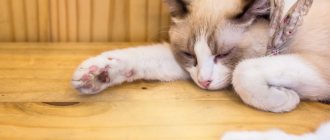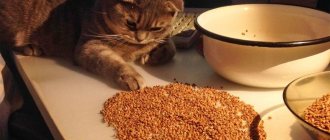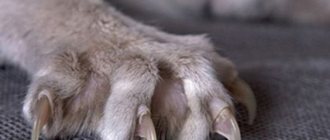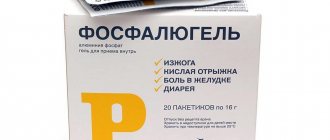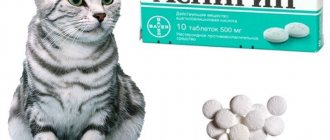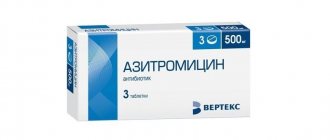Quite often in veterinary practice the pharmaceutical drug “Levomycetin” is used for cats. It is an antibacterial agent with bacteriostatic action, which is active against all kinds of pathogenic microorganisms, causative agents of intestinal and purulent infections. The instructions for use describe in detail the features of using Levomycetin, but cats can only be treated with it as prescribed by a veterinarian.
Eye diseases and their signs
Initially, you should consider the symptoms of inflammatory processes:
- Watery eyes and a reddened cornea indicate inflammation. This may indicate the following problems: rhinotracheitis, conjunctivitis, mycoplasmosis, chlamydia, trauma, vascular keratitis.
- Swollen eyelids in a cat may be a symptom of an allergic reaction to any foods, apartment cleaning products, medications or other allergens.
- If the lens, cornea becomes cloudy, or loses its shine, you should immediately contact a veterinarian. This may be a sign of serious diseases: intoxication, glaucoma, optic nerve atrophy.
- If your pet has an eye injury, your pet may ooze watery fluid, ichor, or blood. In this case, surgery and immediate specialist assistance are often required.
The presence of any suspicious symptoms should be discussed with your veterinarian. Only he can identify the problem and prescribe proper treatment.
ABOUT VACCINATIONS
Before any vaccinations, the animal MUST undergo flea and worm treatment!
Rabies is a 100% fatal disease. All species of mammals and humans are susceptible to it. Therefore, rabies vaccination is required for all pets.
Don't forget about vaccination. There are a huge number of preventive vaccinations, but we prefer the NOBIVAK Tricat vaccine (live lyophilized vaccine against viral rhinotracheitis, calicivirus infection and feline viral panleukopenia) and NOBIVAK Rabies (against rabies), Holland. We remind you that vaccine developers recommend the optimal vaccination schedule for each vaccine. If you are not a veterinarian, do not make any adjustments and follow what is written in the instructions or what your veterinarian says. The first vaccinations are given to kittens twice. Immunity is developed only 14 days after the second vaccination. And keep in mind that during the month and a half that the vaccination schedule is in progress, the kitten’s body weakens. Immunity decreases, so during this period you need to protect your pet from unnecessary contact with other animals, from possible drafts; do not bathe or wash the animal during this period. Next, the animal must be vaccinated once a year.
WHAT MEDICINES IS IT DESIRABLE TO HAVE IN A CAT'S HOME MEDICINE KIT?
Let's tell you in order. For any parents, the hardest time is when their baby is sick. In this case, the kitten, cat or cat is our child. We are losing peace and sleep, we are ready to share his illness with the baby, to take it upon ourselves, if it were possible, we are ready to do anything to ensure that our treasure recovers quickly and becomes cheerful and happy again. The kitten cannot tell where it hurts and how. Only suddenly he gets sick. This is where essential medications come to the rescue.
This is the “cat first aid kit” you need to have at home in order to provide first aid yourself before the veterinarian arrives. Attention! In mild cases, I am not focusing your attention on this, you can cope on your own, especially since veterinary services are oh so expensive, and not always of high quality, to be honest.
I WILL DESCRIBE EVERYTHING IN ORDER:
- in case of cuts, bites, if the wound is not lacerated, treat with 3% HYDROGEN PEROXIDE. In the future, if the wound gets wet, treat it again with peroxide and sprinkle with dry STREPTOCIDE (as an anti-inflammatory disinfectant). If the wound cracks, lubricate it with SYNTHOMYCIN EMULSION. If the wound festers, then the well-known VISHNEVSKY OINTMENT will help us all.
In case of severe fatigue, heat stroke, heart failure, and weakness of breathing, you can give heart medications: Corvalol, Valocordin, etc. It is even better to give an injection of SULPHOCAMPHOCAINE.
For general mild malaise and lethargy, we inject our patients with IMMUNOFAN. It stimulates the body's vital resources and helps it cope with the disease faster. There is also a drug called BAYPAMUN from Bayer. It is also a nonspecific stimulator of the body's own defenses. It is an effective prevention of the effects of stress caused by transportation, exhibition, and hospital stay.
If vomiting appears and the stool suddenly deteriorates, then you need to stop feeding altogether (at least for one day), give plenty of fluids with a weak pale pink solution of POTASIUM MANganese and 1-2 tablets of ACTIVATED CHARCOAL. In addition, rice water and chicken broth diluted with water are very helpful. We definitely give 1/2 tablet of SULGIN 2 times a day, and if the stool does not improve within 24 hours, then we begin to give stronger and more effective remedies. Namely antibiotics: chloramphenicol 1/6 tablets 2 times a day and always probiotic agents “BIFICOL” or “BIFIDUM BACTERIN”, or better yet special for animals “LAKTOBIFADOL” or “BIFITRILAC”, and best of all “VETOM 1:1”.
In general, symptoms of diarrhea, and even more so if they are accompanied by vomiting, are the worst and most unpleasant symptom. If a day after the first symptoms appear the kitten does not feel better, if there is also vomiting and it does not stop, then there is only one piece of advice - immediately contact a veterinarian. This can be very life-threatening poisoning, hepatitis, feline enteritis (panleukopenia), etc. The main thing here is not to be late.
Another problem is constipation, which is also unpleasant. In this case, gentle laxatives are needed. This can be milk, vegetable oil (a teaspoon), and a very effective remedy is Vaseline oil (a tablespoon).
If your eyes are red or watery, or there is a speck of dirt in your eye, or there is a slight injury to your eye, we use TETRACYCLINE OINTMENT, which is placed behind the eyelid three to four times a day. If it doesn't get better after a week, go to the vet. There is also a whole list of eye drops listed below.
Deworming is a very necessary thing for our pets. If there are children in families, this is a must. Once a quarter we give a kitten, a cat or a cat antihelminthic drugs, we ourselves always use only DRONTAL for cats, 1 tablet per 4 kg of weight, Bayer. The drug contains praziquantel and pyrantel embonate, so it kills both roundworms and tapeworms. Even a five-fold overdose of Drontal is tolerated by cats without symptoms of poisoning. It is MANDATORY that before worming, you must undergo flea prevention!
Don't forget about ticks and fleas. For cats that go outdoors in the summer, as well as for cat owners who also have a dog, it is still better not to neglect such drugs, but to use them constantly. Since fleas are carriers of many infections, eggs and larvae of worms. We use a drug such as “Advantage” (drops) from Bayer. This wonderful drug is good because it is not absorbed into the blood, spreads over the skin and kills up to 98% of all fleas, their larvae and eggs within 12 hours. And the best thing is that this drug can be used for pregnant and lactating cats; it does not affect pregnancy. In addition, the drug has an umbrella effect, that is, if the mother cat is treated, then baby kittens up to 8 weeks of age also do not become infected with fleas. An analogue may be the drug "Frontline"
If the kitten is still sick or has caught an infection, then of course you need to contact the breeder and the doctor, but know that there are good medications, such as BAYTRIL - a broad-spectrum antibiotic. It is used in the treatment of infectious diseases. Now Russian developers produce many domestic drugs, which also help us, animal owners, a lot. The drug FOSPRENIL is a very effective remedy for the prevention and treatment of viral infections in cats and dogs. And, of course, the main thing is proper balanced nutrition.
Description of the drug
"Levomycetin" for cats and people is available in the form of a clear yellowish liquid. The medicine contains chloramphenicol, boric acid and additional ingredients. The product is sold in plastic dropper bottles, which are equipped with protective caps and dispensers. "Levomycetin" contains an antibacterial substance with the same name.
It has a detrimental effect on many pathogens of infectious diseases. The drug is believed to be effective against strains of bacteria resistant to streptomycin, penicillin and sulfonamides. It is worth knowing that the medication does not suppress the activity of anaerobes and acid-resistant bacteria.
Is it possible to drip "Levomycetin" to cats? Most veterinarians answer this question positively. All components included in the product are well tolerated by animals and are effective in the treatment of many eye pathologies.
Description and characteristics of drops
In particular, chloramphenicol is used to treat infections caused by:
- staphylococci;
- streptococci;
- gonococci;
- meningococci;
- coli;
- Haemophilus influenzae;
- salmonella;
- shigella;
- Klebsiella;
- serrations;
- Yersinia;
- proteus;
- rickettsia;
- spirochetes;
- some types of chlamydia (including those that cause psittacosis and trachoma).
Indications for use
Experts prescribe levomycetin drips for cats when it is necessary to provide an antimicrobial effect. Since this drug helps get rid of many strains of bacteria, it is often used to treat infectious diseases or to prevent ophthalmic diseases.
The medicine has a quick local effect and helps to cure not only the eyes, but also the nose. These drops are best used for infectious diseases, including:
- chronic or acute conjunctivitis;
- corneal ulcer;
- keratitis;
- blepharitis.
In addition, Levomycetin eye drops for cats are prescribed if other drugs cannot overcome pathologies caused by an infectious pathogen. The medication can also be used in the postoperative period to treat the organs of vision from bacteria to prevent infection.
It should be understood that the medication will remain powerless if lacrimation and other symptoms are the result of any disease of the internal organs.
Types of discharge in cats
How can a cat be poisoned? - plants indoors and outdoors
- medications (eg, acetaminophen, NSAIDs, antidepressants, methylphenidate). Eat both your tablets, left in an accessible place, and if you yourself give the animal any drugs prohibited for animals or an overdose/incorrect application, for example, when treating with parasite drops. Many people use drugs for dogs/people for cats, causing them to become poisoned. Remember, the medications you use should only be for cats or those prescribed by your veterinarian. And do not forget about dosages, strictly according to the weight of the animal or according to the doctor’s prescription.
— food poisoning (unsuitable food for cats, poor quality or spoiled). Strictly contraindicated - chocolate, caffeine, onions, garlic, fatty meats, purchased minced meat, citrus fruits, grapes/raisins, apricots, all types of mushrooms, persimmons, nuts, all products with spices, sausages, smoked meats, sweets, canned food for people and much more other. The diet must be balanced especially carefully if your cat is on a natural diet, because poisoning may not be acute, one-time, but will manifest itself over time as chronic pathologies. Try not to buy food in bulk; it can often be spoiled; manufacturers recommend keeping the packaging sealed.
- chemicals, disinfectants in the house, poorly washed floors or other parts of furniture with leftover products can also cause cat poisoning. In case of poisoning with detergents, there may be: Vomiting, diarrhea with blood, difficulty breathing in the animal, convulsions. It is necessary to immediately give a large amount of water and take the cat to the clinic.
- Lead contained in paint, linoleum and batteries - a cat can be poisoned if it eats it.
— Apartment renovation is not only a big stress for many cats, but also a cause of poisoning in animals, for example, when you glue wallpaper, paint and other substances may attract your cat to taste
What plants can poison a cat? Considering our case with fake grass Plants that are poisonous to cats, this is a whole epic. It is very important to limit the contact of cats' faces with some of the plants that owners love so much and unknowingly bring home
Lilies are very poisonous to cats, causing acute kidney failure, vomiting, and lethargy. Cycad palms - cause vomiting, constipation/diarrhea, mainly affecting the liver.
Azalea, laurel, and aloe can cause diarrhea. Begonia - burns mucous membranes.
Asparagus and geranium (the whole plant is poisonous to cats, but especially the leaves) – stomach upset
Other toxic plants - yew, autumn crocus, foxglove, lily of the valley, ivy, boxwood, cyclamen, cyperus, iris, narcissus, snowdrop, calla lilies, hyacinth, tulip, chrysanthemum, belladonna, adonis, aconite, acacia, henbane, geranium, wisteria, St. John's wort, jasmine, honeysuckle, tansy, hellebore, celandine, onion, tomato, elderberry, dandelion, physalis, ficus, rhubarb and violet.
Remember that cats do not always choose only what is beneficial for themselves and not all grass and plants that they can eat are harmless to them. It is important to grow flowers at home that are not dangerous to cats; gift bouquets should also be inaccessible to them.
What are the types of poisoning in cats in the summer, during the summer season? For example, if in the summer a cat is walking on its own in the countryside, when going outside, animals, including cats, are at risk of being poisoned by substances that can poison them - rats, cockroaches, chemicals that are sprinkled on roads.
Poisoning with rat poison can lead to various bleeding (a characteristic sign) and shortness of breath. The antidote, vitamin K1 konakion, is quite difficult to find in our pharmacies, and doctors in clinics may begin to use other hemostatic agents and then search for konakion.
Fertilizers on plots are also dangerous during the summer season. Lawn and garden products can be toxic to animals who ingest them when they wash themselves after walking or lying in a recently treated area.
Poisoning in cats living in an apartment - what must be hidden from the animal? It is important to keep all medications and chemicals out of the reach of animals. When they are poisoned, there can be either mild poisoning - vomiting, diarrhea, or fatal poisoning, due, for example, to acute renal failure.
The most common reason for visiting clinics is food poisoning, when they are fed either spoiled ready-made food or natural food unsuitable for animals.
Compared to poisoning with strong poisons, ingestion of inappropriate food is less likely to lead to acute life-threatening conditions, but causes chronic diseases. What does the liver, pancreas, and stomach most often react to? For any unfavorable signs, even mild ones, it is important to show your animal to a doctor and undergo the necessary tests, even if symptoms such as vomiting and diarrhea could be prevented on your own. A course of additional medications may be required.
Drug poisoning: what medications must be hidden from your cat? Paracetamol is contraindicated in cats; it can cause swelling of the face, cyanosis of the mucous membranes (cyanosis), shortness of breath, renal failure, gastritis/stomach ulcers. In dogs it can cause nausea, vomiting, lethargy, and pale mucous membranes, but may be asymptomatic.
Animals are also contraindicated in such painkillers - non-steroidal anti-inflammatory drugs such as ibuprofen and indomethacin - they are very toxic and can also cause poisoning aspirin, piroxicam, caroprofen, naproxen, phenylbutazone.
Their use with glucocorticoids is especially contraindicated. They can cause stomach ulcerations, stool and vomiting of blood (“coffee grounds”), abdominal pain, and acute renal failure. In case of poisoning with these drugs, it is necessary to induce vomiting, and in case of aspirin poisoning, the stomach can and should be washed out, even if 3 hours have already passed after poisoning, since aspirin can form conglomerates.
Liquid stools of varying consistency, with admixtures of mucus and blood, lack of appetite, weakness and other painful symptoms indicate pathological processes in the organs of the digestive tract. To diagnose the problem and treat it, you need to consult a doctor. However, how to treat diarrhea in cats when it is not possible to immediately contact a veterinarian? In this case, antimicrobial drugs, sorbents, enzymes, and probiotics will help to eliminate the cause of the pathology and restore the functioning of the digestive tract.
Can a cat have Levomycetin?
Veterinarians prescribe this drug to pets suffering from chronic and acute ophthalmic pathologies caused by bacteria sensitive to this medication. The remedy has proven itself well for conjunctivitis (catarrhal, purulent, follicular), blepharitis and keratitis.
"Levomycetin" is also used to prevent complications after operations and for infected eye wounds. After using the drug, therapeutic concentrations are formed in the cornea, aqueous humor of the eye, vitreous body and iris.
Treatment course
It should be understood that any medicine must be prescribed by a veterinarian. As a rule, the dosage of “Levomycetin” for a cat is determined by a specialist. Most often, for a complete recovery, drops are used three or four times a day, with 1-2 drops instilled into each eye. The duration of treatment is from five to seven days. However, the therapeutic course can be increased until the symptoms of the disease completely disappear.
Analogues and prices
Depending on the release form and brand, the average prices for this type of medicine fluctuate within the following limits:
| Release form | Average price in Russia, rub. | Average price in Ukraine, UAH |
| Tablets, 0.5 g No. 10 | 30–105 | 25–33 |
| Eye drops | 9–15 | 13–18 |
| Alcohol solution, 1% | 40–55 | 7–10 |
The drug Levomycetin is a broad-spectrum bacteriostatic antibiotic. With its help, you can effectively fight gram-positive and gram-negative bacteria, pathogens of purulent and intestinal infections.
Veterinarians often use Levomycetin for cats when treating the organs of vision, digestive system or skin.
How to use the drug correctly
How to put Levomycetin in the eyes of a cat? After visiting the veterinarian and prescribing the medication, you must read the instructions for use. After all, the guarantee of an animal’s health and the effectiveness of treatment depend not only on a well-chosen product, but also on its correct use.
There is no need to worry that your pet will be in pain, because the procedure for instilling Levomycetin into the eyes of a cat is painless. It can only cause discomfort. To carry it out correctly, you need to take the animal on your lap. If the pet breaks out, it should be calmed and stroked. It is advisable for the cat to sit with its back to the owner. In this position, she will not see the bottle and will be less afraid.
Before the procedure, you need to wash the hair around the eyes with a damp swab dipped in boiled water. The eyes, cleared of purulent discharge, should be carefully opened, pulling back the lower eyelid, and the cat should be given Levomycetin. In this case, the animal may begin to twitch and break free. It is best to hold your pet in your arms for a few minutes after instillation, and do not let him scratch or wash his eyes. The medicine may sting your eyelids a little. Treatment must be repeated according to the veterinarian's instructions.
Instructions for use
Dosage
Drops should be instilled into animals 3-4 times a day. Place two drops in both eyes, even if only one is affected. The course of treatment lasts at least five days until the clinical manifestations of the disease are eliminated.
Important! Since the drug is an antibiotic, it is recommended to use it only as prescribed by a doctor.
How to give?
You must first remove crusts and pathological exudate from the dog’s eyes. To do this, you can use a sterile gauze pad soaked in saline solution.
The most convenient option is to use the product in a plastic dropper bottle. The drug does not irritate the mucous membrane of the eye, so dogs tolerate the procedure quite calmly.
Before the procedure, it is better to pet the animal and calm it down. Next, use your thumb and index finger to fix both eyelids open (without opening them excessively or pressing).
It is optimal to keep the dropper bottle at a distance of 5-7 cm from the organ of vision, so that the drops fall into the eye, coming off the spout due to gravity. 1-2 drops of the solution are injected into the dog's eye by gently pressing on the dropper bottle.
Contraindications and side effects
Only a veterinarian can prescribe a drug for the treatment of vision organs; Levomycetin eye drops for cats are no exception. Self-diagnosis at home can cause various complications. A contraindication to the use of the product is an allergy to the substances included in the composition, as well as chronic liver and kidney diseases.
Side effects when treating cats with Levomycetin are extremely rare. But still, in some situations, it can cause changes in the pet’s blood pressure, stomatitis, digestive disorders and enterocolitis. If suspicious signs occur, therapy should be stopped.
Possible side effects
As a rule, when used correctly and at the right dosage, the medicine is absolutely safe. But still, one should not exclude the possibility of individual sensitivity to its components and some possibility of developing allergic reactions . Thus, when using the medicine, you should carefully adhere to the following rules:
- If your pet is predisposed to allergic reactions, or has ever reacted “inappropriately” to any medications or food, using this product is strongly not recommended. In cases where there is no other option, it is highly advisable to conduct an allergy test.
- The most serious side effect is the development of aplastic anemia (a serious pathology of the hematopoietic system). If long-term use of the product is necessary, it is necessary to conduct a complete blood test at least once a week. If the results of the latter worsen, the medication should be stopped immediately. It is believed that in cats this effect may develop after two weeks of continuous treatment.
- Do not administer the drug to pregnant or very young animals.
- Levomycetin may interact with other medications. And not always this interaction can have a positive effect on the health of your pet. So if your pet is already taking any medications, be sure to tell your veterinarian! Antibiotics, phenobarbital and cyclophosphamide are especially dangerous in this regard (the latter is used quite rarely for the treatment of cats - it is an advanced antitumor agent).
- With vomiting, lack of appetite and diarrhea are possible from chloramphenicol.
Note that cats are considered most susceptible to side effects from Levomycetin. So let us warn you once again - it is prescribed when there are absolutely no other options.
What to replace
In some cases, there is a need to replace “Levomycetin” for cats with some other product. There are many medications with similar effects. These include “Tsiprovet”, “Iris”, “Desacite”. Among the drugs that do not contain an antibiotic, “Bars”, “Laprikan”, “Tobrex” are used, which are aimed at treating keratitis and conjunctivitis.
In addition, for inflammation of the eyes, you can use “Ananadine” or “Diamond”. And to relieve an allergic reaction, the following are used: “Alomid”, “Histimet” and “Barrier”.
Usage options and dosage
We warn you right away - the medicine is very bitter , so don’t even hope that you can feed it to your cat without suffering losses!
In food, the “wonderful” taste of the drug is poorly masked, and therefore mixing it with minced meat or sausage is practically useless: only a very hungry animal can eat this drug, and even then it’s not a fact.
So, the first use case . The dosage is extremely simple - ¼ tablet per medium-sized cat (within 2.5-3 kg). The medicine must be thoroughly crushed with a pestle to a fine powder. The pet needs to be carefully secured, its mouth should be opened, and then the product should be quickly poured onto the root of the tongue and the larynx area should be thoroughly massaged. The animal will be forced to swallow the powder, but don’t expect gratitude: it is quite possible that the cat will produce thick, flaky saliva for several minutes.
The second option is a variation of the first method. Only in this case, not the powder from the crushed tablet is placed on the root of the tongue, but its quarter directly. You need to massage more carefully, because otherwise the cat may spit out the tablet, causing all the work to go down the drain. There is a third option, which sometimes allows you to give Levomycetin to a cat for diarrhea, without worrying about the animal’s negative reaction to treatment. To do this, you need to take the same quarter of the tablet, crush it, achieving the most powdery structure possible. After this, the resulting powder is mixed with a tablespoon of fatty sour cream, to which you can literally add a pinch of granulated sugar. As practice shows, many cats voluntarily eat the medicine in this form.
If even in the latter case you can’t give your pet the remedy, and you can’t cope with it on your own, try simply spreading the “difficult” sour cream on the animal’s face. It will be forced to lick itself, as a result of which at least part of the drug will be swallowed.
Review of the most popular drugs
"Diamond eyes" - have antibacterial and anti-inflammatory effects. The active substance is chlorhexidine. It reduces the activity of bacteria and destroys their cells at the development stage. Succinic acid and taurine, included in the product as auxiliary components, restore the mucous membrane of the cornea and activate the healing of healthy cells. The product is used to treat eye diseases in cats. Before use, remove purulent discharge with a gauze swab soaked in the drug, then instill one drop into each eye. Treatment is carried out two or three times a day. The treatment course lasts from 5 days to two weeks.
"Bars" is an effective drug that is also prescribed for eye diseases in animals. Suitable for both kittens and adult cats. The medicine includes components such as novocaine and furatsilin. The latter has a disinfecting effect, and novocaine is used as an anesthetic ingredient. Bars drops are used to treat keratitis, purulent conjunctivitis and other infectious pathologies. They can also be used for preventive purposes. The duration of therapy ranges from one week to 10 days. This drug is prescribed to kittens after reaching one week of age. Small pets are not given “Leopard” instillations, but lotions are given. Adults are given two to three drops up to three times a day.
Iris is another popular medicine for cats that helps fight inflammatory eye diseases. The drug has a bactericidal effect and is effective in the treatment of conjunctivitis, blepharitis, and corneal ulcers. The instructions indicate that you need to instill “Iris” one or two drops into each eye for 7-14 days.
"Tsiprovet" - eye drops for cats. Contains the antibiotic ciprofloxacin. This substance has a wide spectrum of action. It kills various types of bacteria: Staphylococcus aureus, chlamydia, coccal infections, Pseudomonas aeruginosa and other gram-negative intracellular organisms. "Tsiprovet" can be used for kittens. Before the procedure, the area around the eyes is cleaned with a napkin, then the drug is instilled in an amount of 3-4 drops. The treatment course lasts from one to two weeks.
Composition and properties
The drug Levomycetin consists of an active component - chloramphenicol, which reduces the rate of bacterial development, exhibiting a pronounced bacteriostatic effect. The medicine is sold in the form of a powder for the preparation of a solution, tablets and eye drops. Most often, when treating cats, veterinarians use the latest form of Levomycetin.
The principle of action of the drug is the ability of chloramphenicol to block the performance of proteins on RNA molecules.
But the drug is not active against all strains; E. coli, some salmonella, gram+ and gram- bacteria fall under its influence. The maximum concentration of the drug in the pet’s blood can remain for 12 hours. The components are eliminated through the liver, so Levomycetin is not recommended for cats with problems with this organ. After instillation of drops into the eyes, a high concentration of chloramphenicol is concentrated in the iris, cornea and vitreous body, but the active substance does not penetrate into the crystal.
